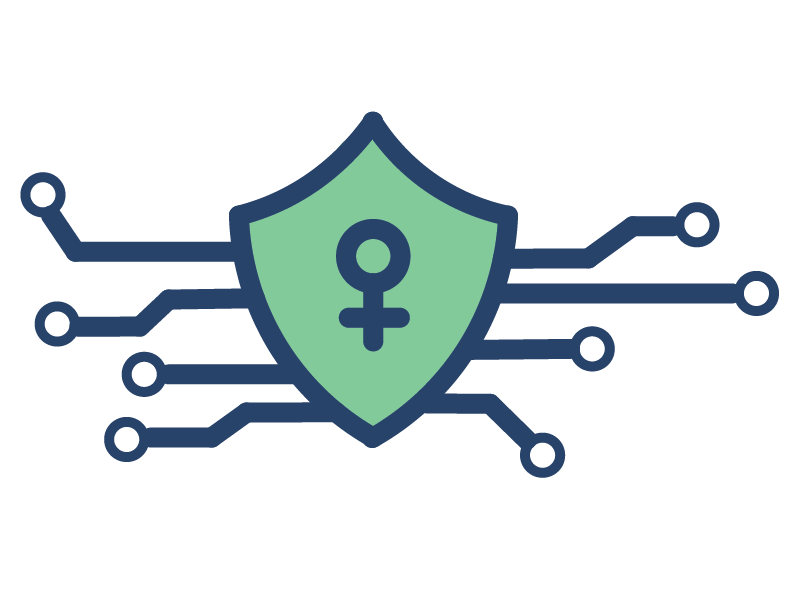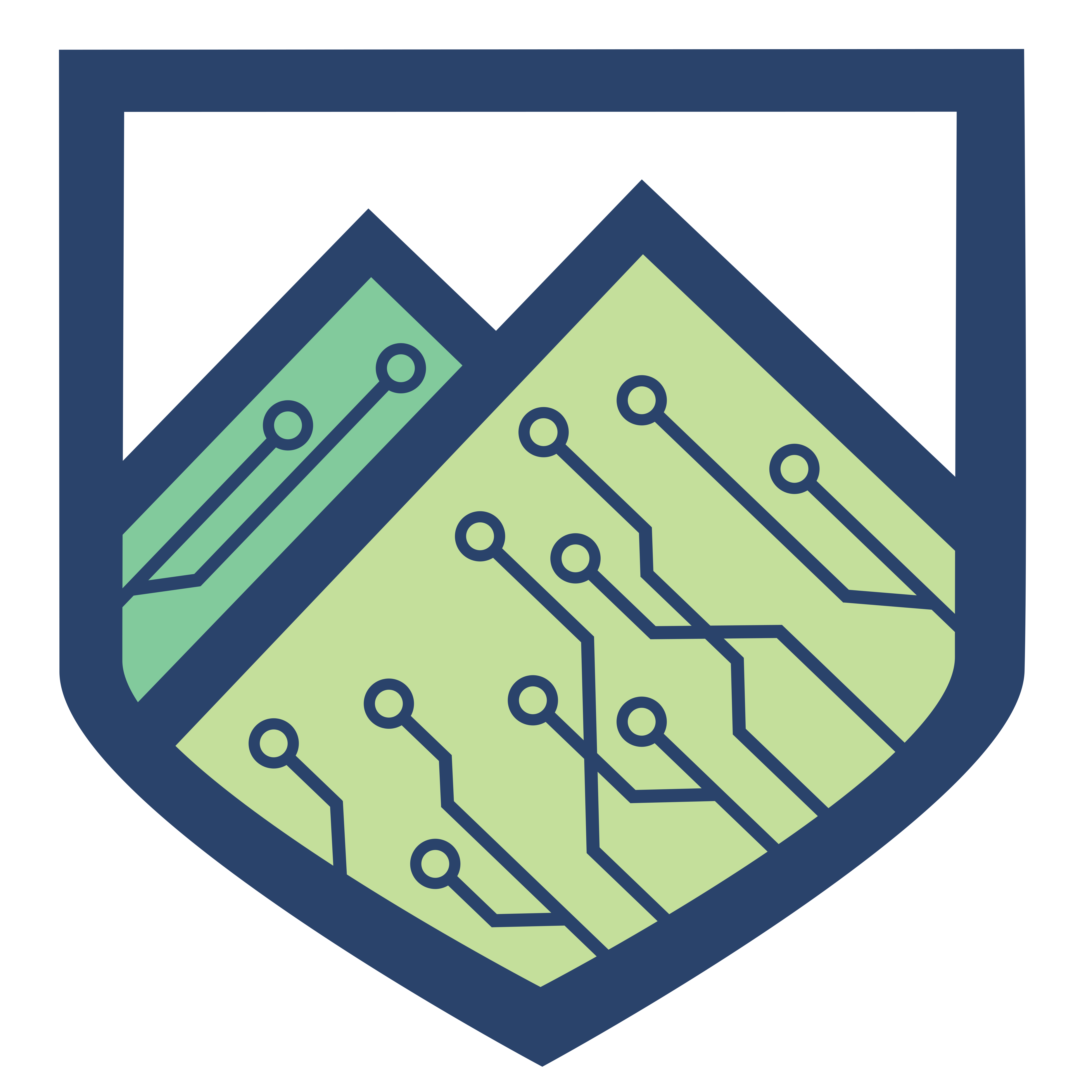The Lack of Representation and How We Can Mitigate It
March 2, 2023
Author: Savannah Ciak
Introduction
Cybersecurity is the practice of protecting your data, networks, and devices from unauthorized access or usage. While this definition is not exclusive to all of the vast components that cybersecurity entails, it highlights the importance of cybersecurity in our ever-growing digital world. Despite this, over three million cybersecurity jobs are unfilled in North America as of 2022. If the demand for cybersecurity professionals is growing rapidly, where are all of the people to fill these roles? This gap between demand and personnel has widened due to an entire section of the workforce being left behind: women.

The Gender Gap in Cybersecurity
As of 2022, women hold about 25% of cybersecurity jobs globally and occupy 11% of the C-level positions. While these numbers have a long way to go before they reach an equal fifty-fifty, they do prove a positive trend compared to previous years.

Source: cybersecurityventures.com
Why is there such a large gender gap in a field that is desperate for workers? Charlie Osbome of Cybercrime Magazine states, “They [women] understand technology. They are no less capable than men, but discrimination, a lack of awareness, and a failure to encourage the next generation to promote cybersecurity as an attractive career path all contribute to fewer women entering the field” (cybersecurityventures.com).
Gender Roles and STEM: A Tightrope
Joan C. Williams of the Harvard Business Review studied why women are being pushed out of STEM fields, including cybersecurity. It is not because of personal choices, education, or performance ability – it is because of bias. The biases women face in educational and professional spheres affect how they perceive themselves and behave around colleagues. Williams outlines five major biases that prevent women from succeeding in STEM:
- Prove it Again: Women have to prove themselves repeatedly in order to be seen as equally as competent as their male counterparts.
- The Tightrope: The pressure of “being seen as too feminine to be competent, and too masculine to be likable.”
- The Maternal Wall: It is assumed that women who have children will be too focused on home life to be productive at work.
- Tug-of-War: Women feel the need to compete with their female counterparts in order to prove their worth.
- Isolation: Especially for women of color, there is a pressure to keep “personal lives hidden” in order to be seen as competent and professional.
Women face dissuasion from entering STEM before they even begin their professional studies and careers. Long-term cultural issues, biases, and stereotyping affect young girls’ views of themselves and STEM. A lack of representation in the media and school can create subtle social cues that say “this is not meant for you,” when in reality, regardless of gender, everyone is equally capable. If a woman can break through barriers and successfully enter the STEM workforce, she is met with biases and undermining interactions. Women do not get promoted at the same rate as men, see fewer salary increases, and are less likely to be given opportunities to prove or advance themselves professionally.
Why Does this Matter: Diversity
Excluding half of the population from a professional sphere also excludes invaluable perspectives, experiences, and intelligence. The integration of different cultural and experiential backgrounds can be a springboard for new ideas and innovation. It can be statistically proven that diversity in the workplace increases productivity and profit. “Companies in the top quartile for gender diversity are 15 percent more likely to have financial returns above their respective national industry medians” (mckinsey.com). Simply, diversity correlates positively with more success. While correlation does not mean causation, it certainly is a strong indicator that closing the gender gap would bring about success for everyone.
Source: aauw.org
How Our Schools Can Bridge the Gap
The Switzerland chapter of Girls in Tech, a nonprofit organization dedicated to closing the gender gap in technology, held a panel to discuss the role of education in its mission. Some great key takeaways that were highlighted in their panel include:
- Important skills that need to be taught to young girls in school are “self-confidence, resilience, and curiosity. Empower girls to take ownership of their career choices.”
- Mentors and role models are essential to encourage STEM participation. Representation can help fight stereotypes.
- “Teachers are multipliers and role models that need to be aware that they can shape how technical topics are perceived.”
- Peer pressure must be combatted.
- Exposure to technology during early childhood is essential.
- Companies need to help create environments that are welcoming and productive for women (switzerland.girlsintech.org).
By following these guidelines and implementing real changes in curriculum, K-12 schools can help encourage more young girls to pursue careers in STEM with the confidence and skills they need to succeed.
What Champlain College is Doing to Help Bridge the Gap
Alejandro (Alex) Hernandez was inaugurated as the 10th President of Champlain College on November 5th, 2022. As a part of his inaugural speech, Hernandez highlighted his vision for cybersecurity at Champlain College. Kaylee Sullivan for Champlain College’s The View summarized this vision:

Source: view.champlain.edu
According to US News, Champlain College’s student body is 64% male and 36% female, and that disparity grows when examining the gender breakdown in the Division of Information Technology and Sciences. However, the college has been attempting to close that gap over the past few years. Hernandez’s new mission statement is one part of that goal. Champlain College provides amazing support for its female student body, including a Womxn in Technology Club, a chapter of the Women in Cybersecurity (WiCyS) national organization, and a Women’s and Gender Center on campus.
At the Leahy Center for Digital Forensics and Cybersecurity (a partner of Champlain College that “acts as a professional development hub” [champlain.edu] for students), a separate Slack messaging channel has been created exclusively for female-identifying employees. Additionally, the Leahy Center’s CyberTech Awareness Program continues to encourage all people to advance their cybersecurity knowledge. To learn more about how Champlain College, the Leahy Center, and other organizations are advancing women’s careers in cybersecurity, follow the social media links at the bottom of this blog and check out the links below:
- Champlain College’s 2030 R/Evolutionary Plan
- Amy Keigwin On Being A Women In Tech And Her Past Intern Experience – The Leahy Center for Digital Forensics & Cybersecurity
- Women In Tech Q&A with Emily Crawford – The Leahy Center for Digital Forensics & Cybersecurity
- Katie Hopkins On Getting Into Tech And Advice To Other Women Interested In Cybersecurity
- Women in Cybersecurity (WiCyS)
Conclusion
More avenues for success in cybersecurity must be provided to young girls and women. STEM opportunities should be provided early on in education with an emphasis on ensuring inclusivity. Professional organizations need to provide employment and growth opportunities to all gender identities, as it is in their company’s and employees’ best interest. There needs to be inclusiveness, diversity, and sexual harassment prevention training required for all professional employees that emphasize zero tolerance for discrimination.
There are small and big steps that need to be taken to ensure a fairer STEM workforce. However, the outlook is good. More women than ever feel empowered to pursue their STEM passions, a trend that will continue if everyone is conscious of the actions that need to be taken.
Resources:
- Gonser, Sarah. “Jobs in Cybersecurity Are Exploding. Why Aren’t Women in the Picture?” NBCNews.com, NBCUniversal News Group, 13 Apr. 2018, https://www.nbcnews.com/news/us-news/jobs-cybersecurity-are-exploding-why-aren-t-women-picture-n865206.
- Hunt, Dame Vivian, et al. “Why Diversity Matters.” McKinsey & Company, McKinsey & Company, Jan. 2015, https://www.mckinsey.com/capabilities/people-and-organizational-performance/our-insights/why-diversity-matters.
- Johnson, Tim. “Why Are So Few Women in Cybersecurity?” GovTech, McClatchy Washington Bureau, 25 Jan. 2018, https://www.govtech.com/workforce/why-are-so-few-women-in-cybersecurity.html.
- Sausalito, Calif. “Women Hold 25 Percent of Cybersecurity Jobs Globally in 2022.” Cybercrime Magazine, 26 Sep. 2022, https://cybersecurityventures.com/women-in-cybersecurity-report-2022/.
- Sausalito, Calif. “Women Represent 20 Percent of the Global Cybersecurity Workforce in 2019.” Cybercrime Magazine, 28 Mar. 2019, https://cybersecurityventures.com/women-in-cybersecurity-20-percent-2019/.
- Sullivan, Kaylee. “Inauguration Ceremony Celebrates Alex Hernandez as 10th President.” The View, Champlain College, 10 Nov. 2022, https://view.champlain.edu/2022/11/10/hernandez-inauguration/.
- Unlisted. “A Guide for Women in Cybersecurity.” Cybersecurity Guide, Cybersecurity Guide, 29 Dec. 2022, https://cybersecurityguide.org/resources/women-in-cybersecurity/.
- Unlisted. “Advancing Women in STEM Strategy: Introduction.” Australian Government| Department of Industry, Science and Resources, https://www.industry.gov.au/publications/advancing-women-stem-strategy/introduction.
- Unlisted. “Champlain College – Profile, Rankings and Data | US News Best Colleges.” U.S. & World Report News, 2021, https://www.usnews.com/best-colleges/champlain-college-3684.
- Unlisted. “How Marketing Can Support the Gender Imbalance in STEM Based Businesses.” The Measured Marketer, 18 Aug. 2021, https://www.themeasuredmarketer.com.au/how-marketing-can-support-the-gender-imbalance-in-stem-based-businesses/.
- Unlisted. “The Role of Education in Bridging the Gender Gap in STEM.” Girls in Tech Switzerland, https://switzerland.girlsintech.org/the-role-of-education-in-bridging-the-gender-gap-in-stem/.
- Williams, Joan C. “The 5 Biases Pushing Women out of Stem.” Harvard Business Review, Harvard Business Review, 24 Mar. 2015, https://hbr.org/2015/03/the-5-biases-pushing-women-out-of-stem.
- Zorz, Zeljka. “What Leads Women to Cybersecurity, and What Makes Them Stay?” Help Net Security, 4 Aug. 2017, https://www.helpnetsecurity.com/2017/08/04/women-cybersecurity/.
Stay up to date with Twitter and Instagram so you always know what we’re up to!
